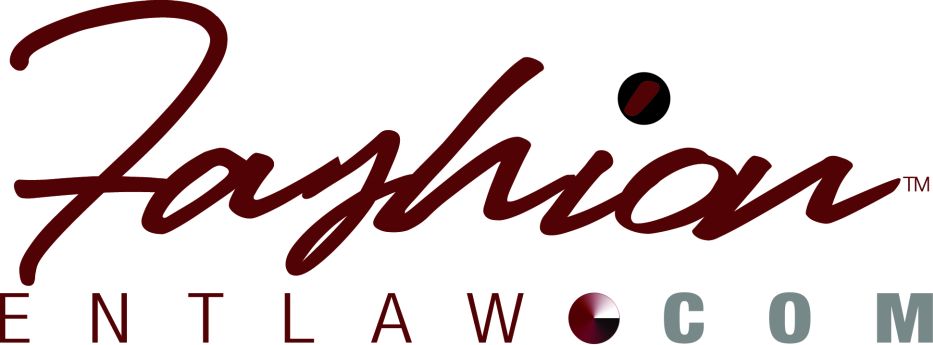 I returned this Monday from my little over a week trip to New York. I was there for New York Fashion Week, the Nigeria Entertainment Awards, among other events. While there, I had the privilege of attending Sheppard Mullin’s “Getting Real with Fashion: Emotional Branding; A Fashionista’s Guide to Reality TV; and Alternative Fashion Retailing” seminar. I must say the seminar was definitely one the highlights of my trip.
I returned this Monday from my little over a week trip to New York. I was there for New York Fashion Week, the Nigeria Entertainment Awards, among other events. While there, I had the privilege of attending Sheppard Mullin’s “Getting Real with Fashion: Emotional Branding; A Fashionista’s Guide to Reality TV; and Alternative Fashion Retailing” seminar. I must say the seminar was definitely one the highlights of my trip.
The event was held about 5:30-8:00pm on September 16th, 2010. On that day, it stormed in New York, yet the overall ambience of the seminar was relaxed and highly informative. In attendance were representatives from some of fashion’s biggest global retail brands: Chanel Inc., Ralph Lauren, Johnson and Johnson and Marc Jacobs, to name a few. There were free cocktails and of course something to nibble on. But, the real deal, beyond the networking opportunities, were the presentations.
Getting Real with Fashion: Emotional Branding by Ted Max
Ted Max, one of Sheppard Mullin’s New York firm partners and a member of the apparel practice, focused on differentiating what branding really meant in the past versus the new concept of branding. Emotional branding today means “Consuming is a sensory experience that involves scent, sounds, colors, taste and shapes.” Ted went through each sensory elaborating on the importance, applicable case law and offering, particularly, trademark legal tips to both lawyers and fashion labels in attendance.
Ted finished his presentation with ‘branding emotions’ on the internet. Experience, Time, Spirituality & Inner Peace, and Nolstagia were some of the things to pay attention to, to brand emotions on the internet.
A Fashionista’s Guide to Reality TV
This part of the seminar focused on what both lawyers who represent designers and designers themselves should be aware of when involved in reality fashion TV shows. The presenter discussed the unilateral nature of these reality TV contracts using Project Runway as an example. Emphasis was placed on negotiating such contracts, option fees, compensation and also “participation back” in your life clauses that are now appearing in these contracts.
Gilting the Brand/ Alternative Fashion Retailing
The final of three presentations was the ‘Gilting the Brand/Alternative Fashion Retailing.’ This presentation by Craig Cardon was lively and very succinct. Cardon discussed preparing a brand for sale and investments. Buyers/investors he explained wanted to see money, brand exposure, customer data and exclusivity. Cardon then went through each criteria. For me, I found the customer data and exclusivity prongs particularly intriguing.
Cardon pointed out the tension between expansion v. exclusivity.
During the recently completed New York Fashion Week, I noticed a huge emphasis placed on affordable fashions and opening the rather elite fashion world to the public i.e. making it more accessible. Cardon talked about how fashion brands are creating exclusivity given this underlying fashion phenomenon. Exclusivity creates price support, buzz and extends brand life, among other benefits.
Cardon also discussed the tension between exclusivity and sales i.e price exclusivity v. access exclusivity. These days we are seeing more “access exclusivity.” A good illustration of these are the online sample sales. Ideeli, I-Ella.com, and gilt.com are examples of these. These online sample sales help expand customer base and geography, among other benefits. They tend to be invite only but everyone is invited yet there is no major loss of exclusivity.
On the discussion about ‘Data.’ Cardon emphasized a point most in the industry probably know but bears repeating. He explained, “Data is the new creative. . . data will become your most important asset.”Cardon rounded off his presentation with a discussion on HSN/QVC and guest designer deals.
Overall, a well organized fashion law seminar with substance. I am glad I attended.
Cheers,
Uduak
Photocredit: I-Ella.com

FASHIONENTLAW blog, authored by Ms. Uduak, was first established in 2010. It is now incorporated, in 2021, as part of the FASHIONENTLAW LAW FIRM blog. The blog is for informational purposes only and provides legal commentary and analysis on the intersection of mainstream America pop culture and the law. It also provides updates on Ms. Uduak’s speaking engagements and press activities. For inquiries on topics covered on this site, please get in touch with our firm. If you seek legal representation for your specific legal needs, please schedule a consultation.
📞Call 916-857-9970 or
🌐Email (firm@fashionentlaw.con)
💻 Schedule a consultation directly on this site.
